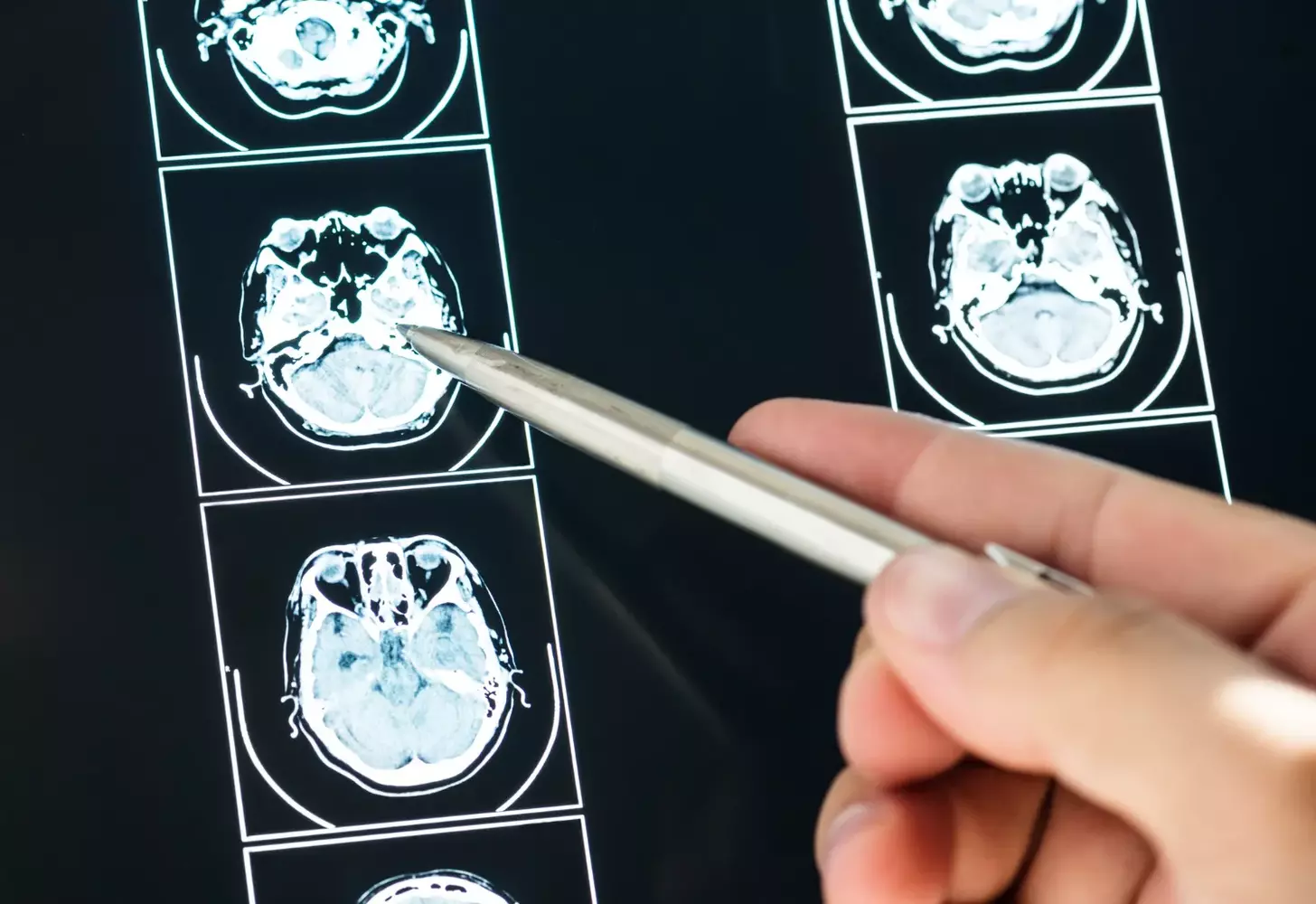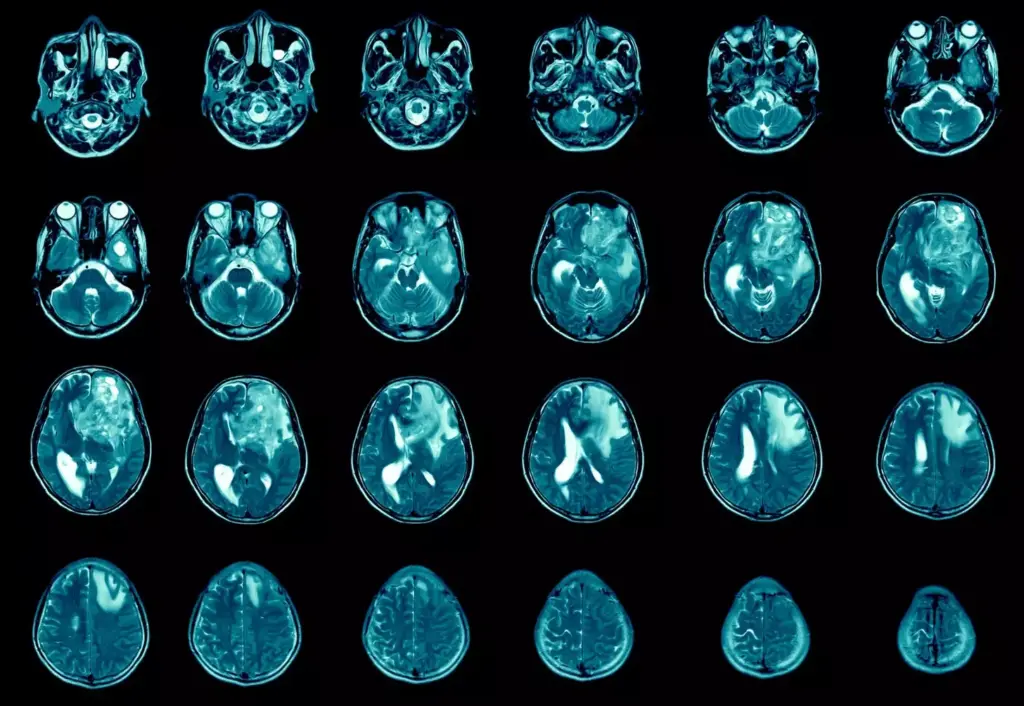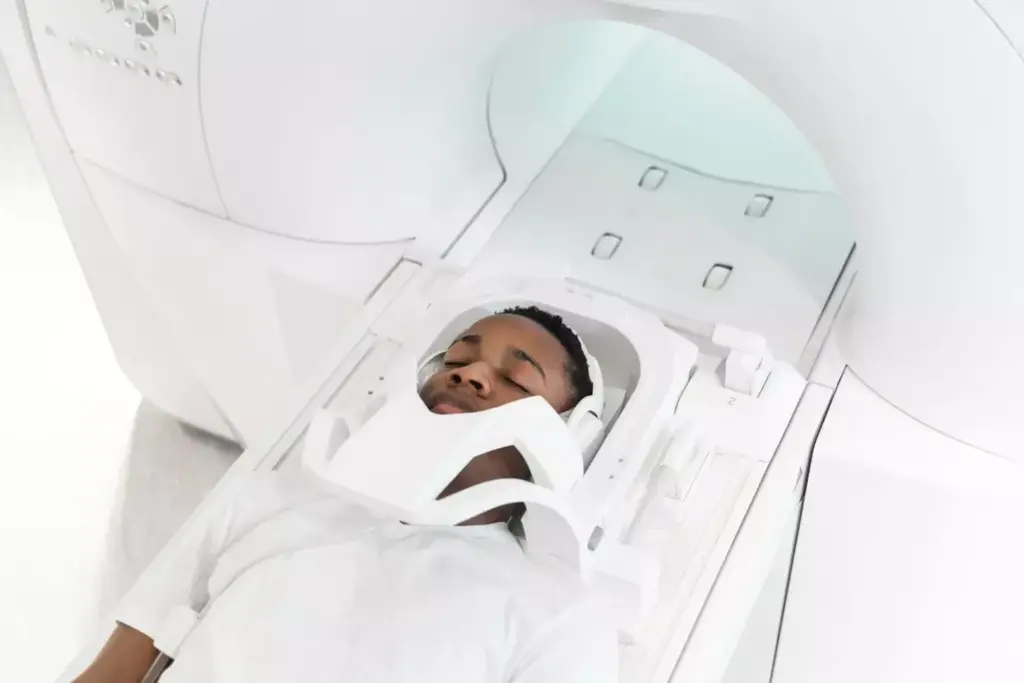Last Updated on November 27, 2025 by Bilal Hasdemir

Removing a brain tumor is a complex and delicate surgery. It needs precision and expertise. At Liv Hospital, we offer top-notch healthcare for international patients. New medical tech has greatly improved care for brain tumor patients.
Our team of expert surgeons follows a detailed brain surgery guide. This ensures the safe removal of the tumor. The process involves careful planning, precise technique, and understanding the patient’s unique condition.
By using the latest technology and techniques, we aim for better results. This is for patients going through brain cancer surgery.
Key Takeaways
- Advanced medical technology improves treatment outcomes for brain tumor patients.
- Liv Hospital provides world-class healthcare for international patients.
- A step-by-step brain surgery guide ensures safe and precise tumor removal.
- Expert surgeons use the latest techniques and technology.
- Personalized care is key for successful brain cancer surgery.
Understanding Brain Tumors and Their Impact
It’s important for both patients and doctors to understand brain tumors. These tumors can greatly affect a person’s life quality. Managing them needs a detailed plan.
Types of Brain Tumors: Malignant vs. Non-Malignant
Brain tumors fall into two main types: malignant and non-malignant. Malignant brain tumors are cancerous and can spread to other brain areas. On the other hand, non-malignant (benign) tumors grow slower and don’t spread as much.
“Knowing if a tumor is malignant or benign is key,” a top neurosurgeon. He stresses the need for accurate diagnosis to choose the right treatment.
Symptoms and Warning Signs
The symptoms of brain tumors vary based on their location, size, and type. Common signs include headaches, seizures, and changes in memory or focus. It’s vital to notice these signs early for timely treatment.
- Headaches that are persistent or worsening
- Seizures or convulsions
- Cognitive or personality changes
- Motor function impairments
When Surgical Intervention Becomes Necessary
Surgery is often a key part of treating brain tumors. The decision to have surgery depends on the tumor’s type, location, and the patient’s health. We talk about how surgery helps in treating brain tumors and the latest techniques used.
Research shows early detection and treatment of brain tumors lead to better results. “New surgical methods and care before and after surgery have made brain tumor surgery safer and more successful,” pointing out the advancements in neurosurgery.
Comprehensive Diagnosis and Evaluation Process
We use a detailed diagnostic method to figure out the type and size of brain tumors. This thorough process is key to creating a treatment plan that fits each patient’s needs.
Initial Neurological Examination
The journey to diagnose starts with a detailed neurological check-up. Our team checks many neurological functions. These include thinking skills, muscle strength, feeling, coordination, and reflexes.
This first check helps spot any problems and gives clues about the tumor’s location and how it might affect the brain.
Key components of the neurological examination include:
- Cognitive and mental status assessment
- Cranial nerve evaluation
- Motor and sensory testing
- Coordination and balance assessment
- Reflex testing
Advanced Imaging Techniques
Advanced imaging is vital for diagnosing brain tumors. We use the latest technologies to see the tumor and its surroundings in great detail.
Some advanced imaging methods we use are:
| Imaging Modality | Key Features | Clinical Utility |
|---|---|---|
| MRI (Magnetic Resonance Imaging) | High-resolution soft tissue imaging | Detailed tumor visualization, tumor-brain interface assessment |
| CT (Computed Tomography) Scan | Rapid imaging, calcification detection | Emergency situations, bony structure evaluation |
| PET (Positron Emission Tomography) | Metabolic activity assessment | Tumor grading, treatment response evaluation |
“The integration of advanced imaging techniques has revolutionized the field of neuro-oncology, enabling more accurate diagnoses and personalized treatment plans.”
Biopsy Procedures and Tissue Analysis
Often, a biopsy is needed to confirm a brain tumor diagnosis. Our team does different biopsies based on the tumor’s location and type.
The biopsy process involves:
- Pre-biopsy planning using advanced imaging
- Stereotactic or navigated biopsy techniques
- Intraoperative frozen section analysis
- Comprehensive histopathological examination
The biopsy and tissue analysis give us vital information. This helps us know the tumor type, grade, and genetics. This information guides treatment choices.
Pre-Surgical Planning for Brain Tumor Removal
Pre-surgical planning is very important for patients having brain tumor surgery. It helps make sure the surgery goes well and the patient gets better. We know that careful planning can lower risks and make the surgery more successful.
Advanced Neuronavigation Mapping
Advanced neuronavigation mapping is a big part of planning before surgery. It makes a detailed, three-dimensional map of the brain. This helps surgeons find the tumor and plan the best way to remove it.
We use MRI and CT scans to make sure the plan fits each patient’s brain perfectly. This way, we can make sure the surgery is as safe and effective as possible.
Functional Brain Mapping Techniques
Functional brain mapping helps us find important brain areas. These areas control things like speech, movement, and feeling. By finding these areas, we can avoid hurting them during surgery.
Tools like fMRI and electrocorticography help us make a detailed map of the brain. This map is key to keeping the patient’s brain functions safe during surgery.
Patient Preparation Protocol
Getting patients ready for surgery is very important. We check their health, fix any health issues, and teach them about the surgery and recovery. This helps them feel less scared and improves their chances of doing well.
We also work together as a team. Neurosurgeons, anesthesiologists, nurses, and others all help. This teamwork makes sure we take care of every part of the patient’s care.
The Resection of a Brain Tumor: Surgical Approach
Removing a brain tumor is a delicate surgery. It starts with a craniotomy to get to the tumor. Our team of skilled neurosurgeons is ready for these tough surgeries.
Craniotomy Procedure: Step-by-Step
A craniotomy is when we temporarily remove a part of the skull to reach the brain. This lets us remove the tumor safely. Here’s what happens during a craniotomy:
- We plan the surgery using advanced imaging to find the best spot and size for the craniotomy.
- We carefully take out a part of the skull, called a bone flap, to get to the dura mater.
- We handle the dura with care to protect the brain underneath.
Dural Opening and Brain Exposure
After the craniotomy, we open the dura mater. This is the protective layer around the brain. We must be very careful not to harm the brain.
Careful dural opening is key to avoid brain injury. We use special tools to make a precise cut in the dura. This gives us a clear view of the tumor and the brain around it.
Tumor Localization and Access Planning
With the dura open, we find the tumor using advanced systems. These systems show us exactly where the tumor is, how big it is, and its relation to important brain areas. This info is vital for planning the safest way to get to the tumor.
We use this info to plan the best path to the tumor. Accurate tumor localization is essential for a successful surgery. We use all the diagnostic tools we have to get it right.
Advanced Techniques in Brain Cancer Surgery
The field of brain cancer surgery has seen big changes. Techniques like fluorescence-guided surgery are changing how we remove tumors. These new methods help make surgery more precise and improve patient results.
Fluorescence-Guided Surgery
Fluorescence-guided surgery uses fluorescent dyes to light up tumors during surgery. This makes it easier to see the tumor edges. It helps doctors remove cancer cells more accurately, keeping healthy brain tissue safe.
Studies show this method can lead to better results for patients. It helps remove more of the tumor.
Laser Ablation for Deep-Seated Tumors
Laser ablation is a new way to treat hard-to-reach brain tumors. It uses a laser to heat and kill tumor cells. This method is precise and effective for tumors in tough spots.
Ultrasonic Aspiration Technology
Ultrasonic aspiration is another advanced tool in brain cancer surgery. It uses sound waves to break down tumors, which are then sucked out. This method is great for tumors that are soft or near important brain areas.
Intraoperative MRI and Real-Time Monitoring
Intraoperative MRI lets surgeons see how the surgery is going in real-time. It shows how much of the tumor is being removed. This helps surgeons adjust during the surgery to remove more tumor safely.
These new techniques are big steps forward in brain cancer surgery. They offer better results and hope for patients. By using these technologies, we’re making progress in treating brain tumors.
Minimally Invasive Approaches to Brain Mass Removal
Neurosurgeons now use new methods to remove brain masses. They use endoscopic surgery and keyhole craniotomies. These methods help patients recover faster and have fewer complications.
Endoscopic Techniques for Tumor Extraction
Endoscopic surgery uses a small camera and tools through tiny cuts. It helps remove tumors with little damage to the brain. This method works well for tumors in specific brain areas.
The benefits of endoscopic surgery include:
- Smaller cuts mean less scarring
- Lower risk of infection
- Less pain after surgery
- Patients can leave the hospital sooner and recover faster
Keyhole and Port-Based Surgery
Keyhole and port-based surgery are other minimally invasive methods. They make a small hole in the skull to remove the tumor. Port-based surgery uses a slightly bigger hole but causes less damage.
Key advantages of these methods include:
- Less damage to brain tissue
- Lower risk of neurological problems after surgery
- Smaller cuts mean better looks after surgery
Benefits and Limitations of Minimally Invasive Methods
Minimally invasive surgery has many benefits but also some drawbacks. It needs special training and tools. Not all tumors can be removed this way.
We check each patient to see if they’re a good fit for these methods. We look at the tumor’s size, location, and type.
The main benefits of these methods include:
- Patients recover faster
- Less damage to the brain
- Better results in some cases
But, there are also some limitations:
- Not all tumors can be removed this way
- Needs special training and tools
- May not work well for all tumor locations
We choose the best method for each patient. This way, we can get the most benefits from minimally invasive surgery.
Understanding Inoperable Brain Tumors
Inoperable brain tumors are a big challenge in neuro-oncology. They need a deep understanding of their nature and treatment options. Dealing with these tumors is tough for patients and their families.
Factors That Make a Tumor Inoperable
Several factors can make a brain tumor inoperable. These include:
- Location: Tumors in critical brain areas are too risky to remove.
- Size and Spread: Large or spread-out tumors are hard to remove fully.
- Proximity to Vital Structures: Tumors near vital brain parts pose a big risk for surgery.
Knowing these factors is key to finding the best treatment for inoperable brain tumors.
Alternative Treatment Strategies
When surgery is not possible, other treatments can help manage inoperable brain tumors. These include:
- Radiation Therapy: Techniques like SRS and FSRT target tumors precisely, protecting the brain.
- Chemotherapy: Chemotherapy can be used alone or with radiation to treat these tumors.
- Targeted Therapy: Targeted therapies focus on the tumor’s molecular traits, providing more options.
We work with patients to find the best treatment plan for their condition and needs.
Emerging Technologies for Previously Inoperable Cases
New medical technologies are opening up new ways to treat previously inoperable brain tumors. Some of these include:
- Laser Interstitial Thermal Therapy (LITT): LITT uses laser heat to kill tumor tissue.
- Immunotherapy: Immunotherapy uses the body’s immune system to fight cancer, showing promise for brain tumors.
At Liv Hospital, we keep up with these new technologies. We offer our patients the latest and most effective treatments.
Intraoperative Decision-Making During Brain Tumor Resection
Decisions made during surgery are key to removing tumors and keeping brain function intact. Neurosurgeons face a complex challenge. They must make quick, informed choices during the operation.
Balancing Maximum Resection with Functional Preservation
Removing tumors while keeping brain functions safe is a big challenge. Our team plans carefully before surgery and uses advanced tools during it. This helps us protect important brain areas.
Advanced imaging and monitoring let us see how close the tumor is to vital parts. We then adjust our plan to avoid damage.
Neurophysiological Monitoring Techniques
Monitoring the brain’s function is essential during surgery. Tools like EEG, SSEP, and MEP give us instant feedback. They help us see if the brain and nerves are okay.
| Monitoring Technique | Purpose | Benefits |
|---|---|---|
| EEG | Assess cortical activity | Detects early signs of cortical dysfunction |
| SSEP | Evaluate sensory pathway integrity | Helps prevent damage to sensory pathways |
| MEP | Assess motor pathway function | Reduces risk of motor deficits post-surgery |
Awake Craniotomy for Tumors in Eloquent Areas
For tumors in key brain areas, we use awake craniotomy. This lets us watch the patient’s brain function live. It helps us remove the tumor carefully and safely.
The patient’s input is very important. It helps us avoid harming critical brain areas.
Our team’s skill and advanced monitoring tools help improve surgery outcomes. This is true for patients with brain tumors.
Post-Surgical Care After Brain Tumor Extraction
Recovery after brain tumor surgery is greatly influenced by post-surgical care. At Liv Hospital, we know how vital good care is during this time.
Immediate Post-Operative Management
Right after surgery, care is key to avoid problems and help recovery. Our team keeps a close eye on patients for any signs of issues or complications.
Important parts of early care include:
- Managing pain well
- Watching for infection or swelling signs
- Keeping blood pressure and oxygen levels right
Monitoring and Managing Possible Complications
After brain tumor surgery, problems like infection, swelling, or brain function issues can happen. Spotting these early is key to handling them well.
| Complication | Signs and Symptoms | Management Strategy |
|---|---|---|
| Infection | Fever, increased white blood cell count, wound discharge | Antibiotics, wound care |
| Cerebral Edema | Headache, confusion, neurological deficits | Corticosteroids, monitoring ICP |
Rehabilitation Process and Neurological Recovery
The rehab plan is made just for each patient. It aims to help them get back lost functions and improve life quality. Our team includes neurologists, physical therapists, and occupational therapists.
Rehab might include:
- Physical therapy to boost mobility and strength
- Occupational therapy to help with daily tasks
- Speech therapy for speech or swallowing issues
At Liv Hospital, we’re dedicated to top-notch care after surgery. We aim to support our patients’ recovery and health.
Outcomes and Prognosis After Brain Tumor Removal Surgery
Brain tumor removal surgery results can vary a lot. This depends on the tumor’s type, size, and where it is. It also depends on the patient’s health.
Factors Affecting Surgical Success Rates
Many things can affect how well brain tumor surgery goes. The type and grade of the tumor are very important. For example, benign tumors usually have a better chance of recovery than malignant ones.
When we look at how well surgery works, we consider several things. These include:
- Tumor characteristics (type, size, location)
- Patient’s age and overall health
- Surgical technique and technology used
- Experience of the surgical team
| Tumor Type | Typical Prognosis | Average Recovery Time |
|---|---|---|
| Benign | Favorable | Several weeks to a few months |
| Malignant | Guarded | Several months to a year or more |
Recovery Timelines for Benign vs. Malignant Tumors
Recovery times are different for benign and malignant tumors. Benign tumors usually heal faster because they are not aggressive.
“The prognosis for patients with benign brain tumors is generally good, with many experiencing significant improvement post-surgery.” – Liv Hospital’s Neurosurgery Department
Long-term Follow-up and Surveillance Protocols
It’s very important to keep an eye on patients after surgery. We suggest regular check-ups and scans to catch any problems early.
Liv Hospital’s Approach to Optimizing Outcomes
At Liv Hospital, we use a team effort to help patients after surgery. Our experts work with patients to give them the best care and support.
By knowing what affects results, we can help patients better. This way, we can improve their quality of life.
Conclusion: The Future of Brain Tumor Surgery
Looking ahead, brain tumor surgery is set to get even better. Ongoing research and new tech are making big strides in neurosurgery. At Liv Hospital, we’re all about top-notch care, using the newest methods and tools to help our patients.
The future looks bright for brain tumor surgery. New tools like fluorescence-guided surgery, laser ablation, and ultrasonic aspiration are on the horizon. These advancements will help us remove tumors more safely and effectively, leading to better lives for our patients.
We’re always looking to the future, investing in new tech and research. This means our patients get the latest treatments. With our advanced technology and caring approach, we’re committed to the best outcomes for those with brain tumors.
FAQ
What is brain tumor removal surgery?
Brain tumor removal surgery, also known as brain tumor resection, is a procedure to remove a brain tumor. Our neurosurgeons at Liv Hospital use advanced techniques and technologies for the best results.
How is a brain tumor diagnosed?
To diagnose a brain tumor, we do a thorough evaluation. This includes neurological exams, MRI scans, and biopsy procedures. Our team at Liv Hospital uses the latest technology for accurate diagnoses.
What are the symptoms of a brain tumor?
Symptoms of a brain tumor vary based on the tumor’s location, size, and type. Common symptoms include headaches, seizures, cognitive changes, and neurological deficits. If you’re experiencing these symptoms, seek medical attention right away.
Can all brain tumors be removed surgically?
Not all brain tumors can be removed surgically. The decision to remove a tumor depends on its location, size, and type. Our team at Liv Hospital assesses each case to determine the best treatment.
What are the advanced techniques used in brain cancer surgery?
Advanced techniques include fluorescence-guided surgery, laser ablation, and ultrasonic aspiration. These technologies improve surgical precision and safety, leading to better patient outcomes.
What is the recovery process like after brain tumor surgery?
After surgery, we manage your immediate care, watch for complications, and start a rehabilitation program. Our team at Liv Hospital provides full care during your recovery.
How successful is brain tumor removal surgery?
Success depends on the tumor’s type, size, and location, and the patient’s health. Our neurosurgeons at Liv Hospital work closely with patients to improve outcomes and provide personalized care.
What are the alternatives to surgery for brain tumors?
Alternatives include radiation therapy, chemotherapy, and non-surgical treatments. Our team at Liv Hospital considers these options when surgery is not the best choice.
Can benign brain tumors be removed?
Yes, benign brain tumors can be removed surgically. Our neurosurgeons at Liv Hospital have a lot of experience in removing benign tumors, improving patient outcomes and quality of life.
How long does it take to recover from brain tumor surgery?
Recovery times vary based on the case, tumor type, and surgery complexity. Our team at Liv Hospital gives personalized guidance and support during recovery.
What is the role of intraoperative MRI in brain tumor surgery?
Intraoperative MRI is key in brain tumor surgery. It allows for real-time monitoring and improves surgical precision. This technology helps our neurosurgeons at Liv Hospital achieve the best results.
Are there any minimally invasive approaches to brain mass removal?
Yes, there are minimally invasive approaches like endoscopic techniques and keyhole or port-based surgery. These methods reduce recovery time and tissue damage. Our team at Liv Hospital uses them when appropriate.
What are the factors that affect surgical success rates for brain tumor removal?
Success rates depend on the tumor’s type, size, and location, and the patient’s health and neurological status. Our team at Liv Hospital carefully evaluates these factors to improve outcomes.








